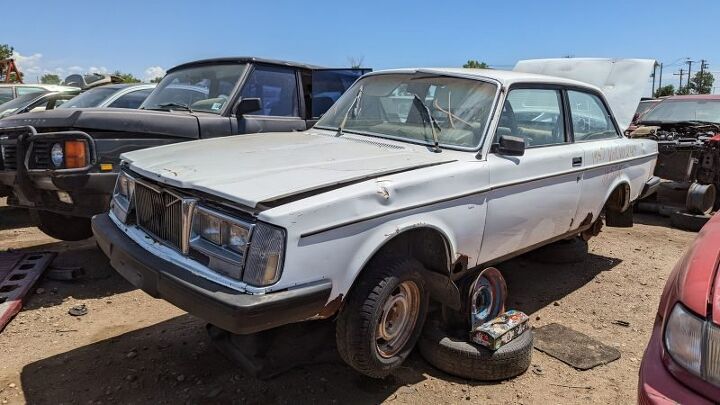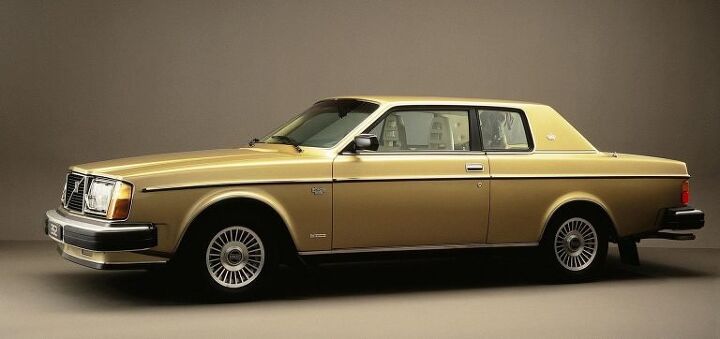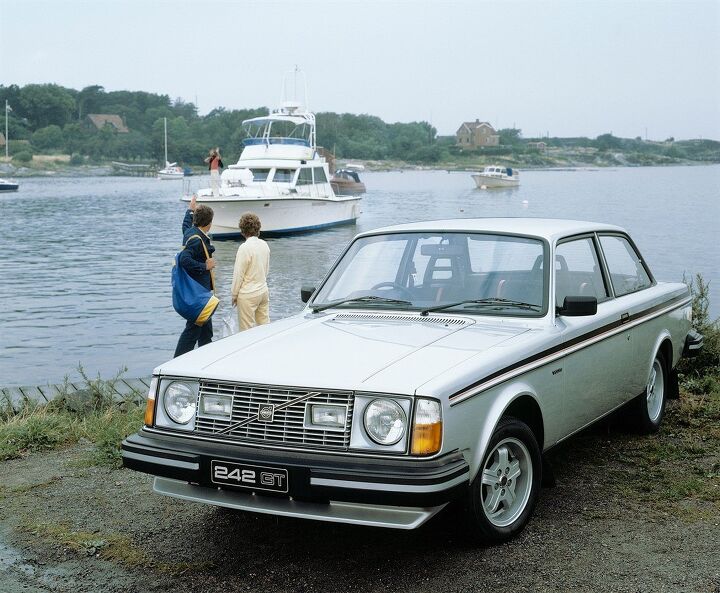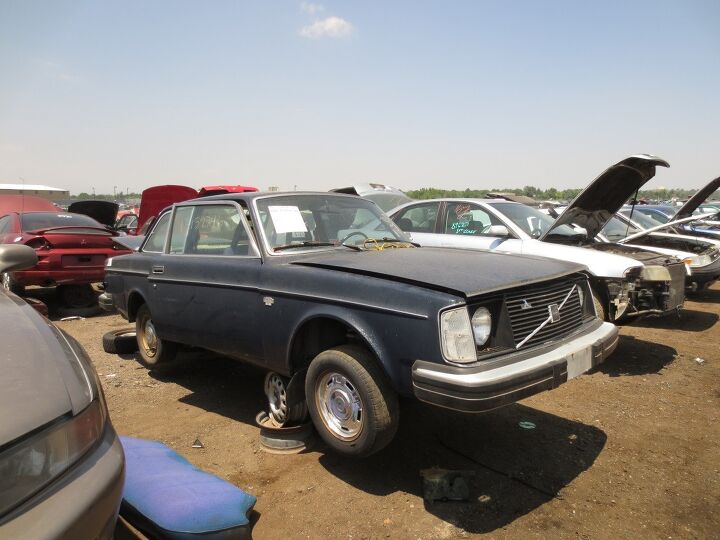#Volvo200Series
Junkyard Find: 1983 Volvo 242
Volvo built the 200 Series for nearly 20 years and the owners of those sensibly rectangular machines tended to keep them for decade after decade, so I have no problem finding plenty of discarded examples during my junkyard travels despite the last ones rolling off the assembly line in 1993. Most of those machines have been the four– cylinder/ four– or five– door cars, though, because more cylinders and/or fewer doors didn’t seem stolid enough for your typical American Volvo shopper. In fact, prior to today, I had documented as many junked 262C Bertones as 242 two– doors (and just a single 264 sedan). Now I’ve found this rusty 242 in a self-service yard between Denver and Cheyenne.
Rare Rides: Bertone by Any Other Name, the 1979 Volvo 262C
Today’s Rare Ride is an example of the first time Bertone added heaps of Italian build quality to an ordinary Volvo midsize. We’ve covered Bertone’s second effort ( the 780) long ago, so it’s past time we talk 262C.
Rare Rides: A 1979 Volvo 242 GT, Ready for Sports Driving
Today’s Rare Ride is from a time when a few of the sensible people at the Volvo Boxy Car Company created a special, sporty version of their mainstream model. From long ago and now largely forgotten, it’s the 1979 Volvo 242 GT.
Junkyard Find: 1977 Volvo 242
In California, Volvo 240 s are going to the crusher in huge numbers as the traditional Volvo-buying demographic transitions to the Prius. This has been going on for at least a decade, and every wrecking yard in the Los Angeles and San Francisco areas has at least ten 240s in stock these days. Here in Colorado, the pace is slower but I still see a fair number of 240s ( and 140s) in Denver-area yards. Today’s find is an early example of the breed, very straight and completely rust-free. Despite what fanatical 240 worshipers say, the 240 two-doors just aren’t valuable enough to be worth saving once they get a little tired.



















Recent Comments